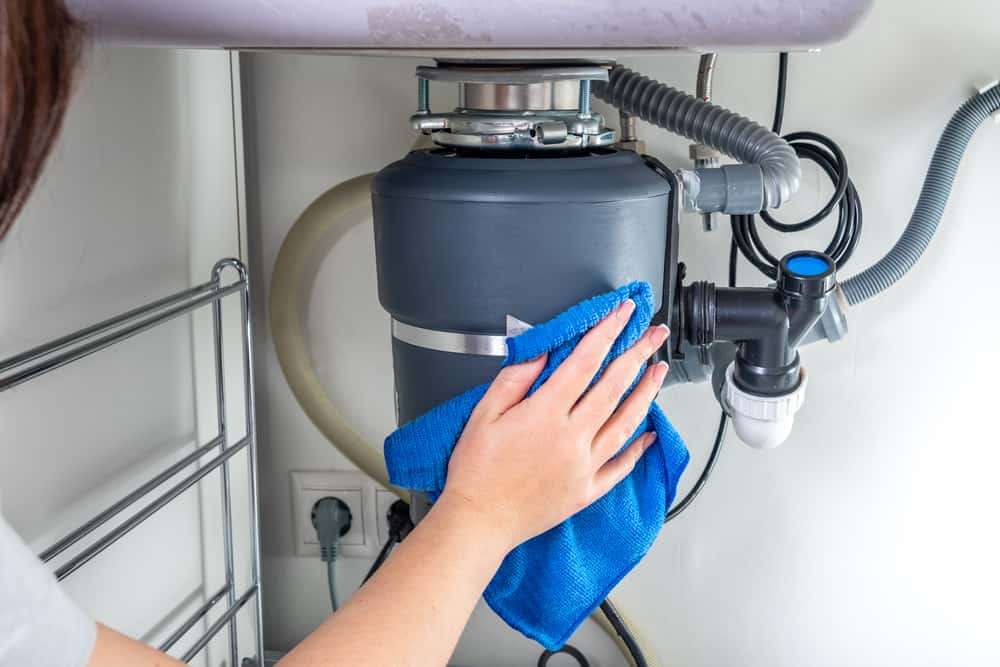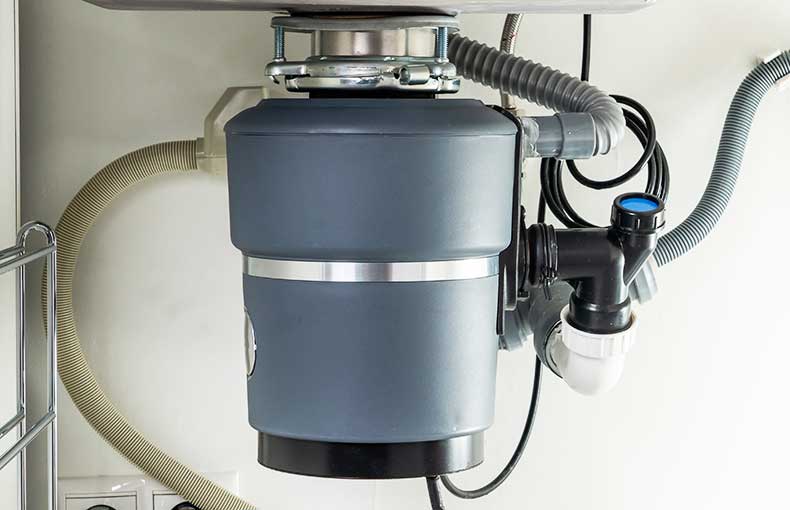Our Comprehensive Guide to Fixing a Leaky Garbage Disposal
Our Comprehensive Guide to Fixing a Leaky Garbage Disposal
Blog Article
How do you actually feel when it comes to The Handy Guide To Fixing Your Garbage Disposal Leaking?

Waste disposal unit are vital kitchen area devices that help in disposing of food waste efficiently. Nevertheless, a dripping waste disposal unit can be a frustrating and untidy issue to take care of. Luckily, several leakages can be taken care of conveniently with a couple of straightforward steps. In this short article, we will talk about how to fix a dripping waste disposal unit properly.
Intro
Garbage disposals are installed under kitchen area sinks and are created to shred food waste into smaller pieces, permitting it to go through the pipes system easily. While these tools are normally reliable, leakages can occur with time due to wear and tear, loosened connections, or damages to the device.
Typical Sources Of Leaks in Rubbish Disposals
Worn Seals and Gaskets
Seals and gaskets play a crucial role in avoiding water from leaking out of the garbage disposal. In time, these elements can weaken, leading to leakages around the disposal unit.
Loose Connections
The links between the garbage disposal and the pipes system can end up being loose with time, triggering water to leak out throughout procedure.
Splits or Holes in the Disposal Device
Physical damage to the waste disposal unit, such as splits or openings in the real estate, can also cause leaks.
Determining the Source of the Leak
Prior to attempting to fix a dripping garbage disposal, it is essential to recognize the source of the leak. This can normally be done with aesthetic inspection or by carrying out basic examinations.
Visual Inspection
Examine the waste disposal unit device carefully for any indications of water leakage. Pay very close attention to areas around seals, gaskets, and connection points.
Evaluating for Leaks
One way to evaluate for leakages is by running water with the disposal system and checking for any noticeable indicators of leak.
Tools and Materials Needed for Fixing a Leaking Garbage Disposal
Prior to beginning the repair work process, collect the required tools and products, including a screwdriver, flexible wrench, plumbing's putty, replacement seals or gaskets, and epoxy or patching product for repairing fractures or holes.
Step-by-Step Guide to Fixing a Leaking Waste Disposal Unit
Shut off the Power
Prior to attempting any type of repairs, make sure that the power to the garbage disposal system is turned off to prevent the risk of electric shock.
Find the Leakage
Identify the precise area of the leak and figure out the reason.
Tighten up Connections
Use a wrench to tighten any type of loosened links in between the disposal device and the plumbing system.
Replace Seals or Gaskets
If the leakage results from used seals or gaskets, get rid of the old parts and change them with brand-new ones.
Patching Fractures or Openings
For splits or openings in the disposal system, use epoxy or an appropriate patching material to secure the broken location.
Evaluating the Waste Disposal Unit After Repair Service
When the repair work is complete, examine the waste disposal unit by running water through it to make certain that the leakage has been resolved.
Preventive Maintenance Tips to Stay Clear Of Future Leaks
To stop future leaks, it is essential to do regular upkeep on your garbage disposal. This includes maintaining it tidy, avoiding putting non-food things or hard items down the disposal, and periodically checking for leakages or various other issues.
Final thought
In conclusion, taking care of a dripping garbage disposal is a fairly simple procedure that can be finished with standard devices and materials. By following the steps laid out in this article and exercising preventive maintenance, you can keep your garbage disposal in good working condition and stay clear of expensive repair work in the future.
What to Do About a Leaking Garbage Disposal
A leaking garbage disposal often goes unnoticed until you confront a sopping cabinet, a foul-smelling puddle, or an audible drip-drip-drip from the unit. The fix can be frustrating, too, because the leak can stem from a number of components in the system. Fortunately, with a little sleuthing, you can zero in on the leak and—depending on the exact location—stop the icky oozing and repair the component that caused it. Worst case scenario, if it turns out that the garbage disposal must be replaced, installing a new one is a reasonable do-it-yourself task for those with basic plumbing skills. Read on to keep the cash you’d otherwise hand over to a pro.
Prepare to find the leak
Prior to testing the garbage disposal for leaks, unplug it at the wall outlet and turn off the power from the breaker box to prevent electrical shock. Then insert a watertight sink stopper into your sink drain and wipe the unit dry with a clean cloth. In any handy container, mix a few drops of food coloring into a few cups of water, and pour the dyed water onto the sink stopper to help you locate the leak.
Investigate the source
the top, where the disposal meets the sink drain the side, where the dishwasher hose or main drain pipe connects to the disposal or the bottom of the unit Inspect each of these locations while gliding a light-colored rag over the unit; the dyed water will readily show on the rag and reveal the location of the leak. If a leak isn’t immediately apparent, remove the sink stopper and pour a few more cups of dyed water down the sink drain, then check for leaks again. Leaks near the top of the unit are more likely to show themselves while the sink is plugged, while side and bottom leaks are more noticeable while the sink is unplugged.
The metal sink flange that sits directly inside the sink drain is typically sealed around the top with plumber’s putty (a clay-like sealant) and then secured from under the sink with bolts. If the plumber’s putty deteriorates, or the bolts loosen, the flange can no longer form a watertight seal between the sink drain and the disposal—which could cause a leak at the top of the unit.
To reseal the leaky flange, you must first detach the garbage disposal. Start by loosening the screws securing the main drain pipe to the disposal, then loosen the screws in the metal clamp securing the dishwasher hose to the disposal and detach the drain pipe and dishwasher hose from the disposal. Loosen the screws in the mounting ring that connects the disposal to the metal mounting assembly beneath the sink, then pull down the disposal and carefully set it on a clean, dry surface. Loosen the bolts in the mounting assembly with a wrench, then pull down the mounting assembly and set it near the disposal.

We had been shown that article about How to fix a pretty consistent leak from my garbage disposal from a good friend on our other blog. Feel free to set aside a second to promote this content if you appreciated it. I love reading our article about Why Is My Garbage Disposal Leaking From the Bottom?.
Call Today Report this page